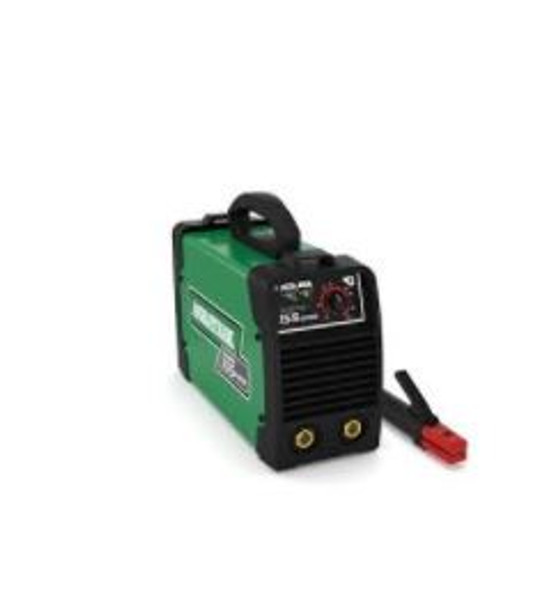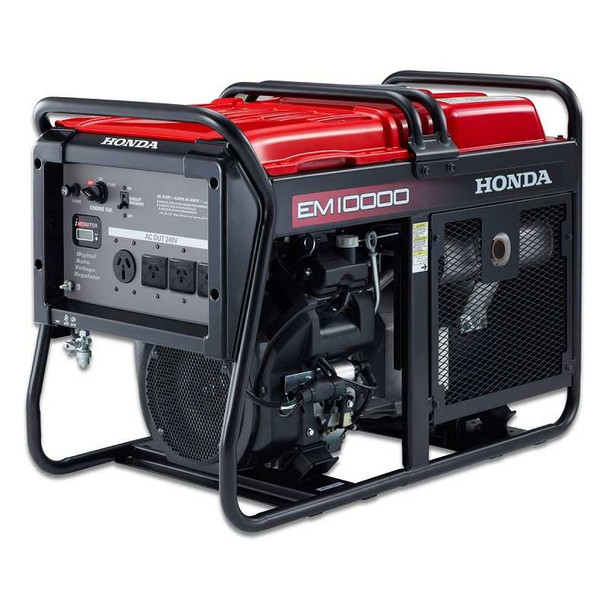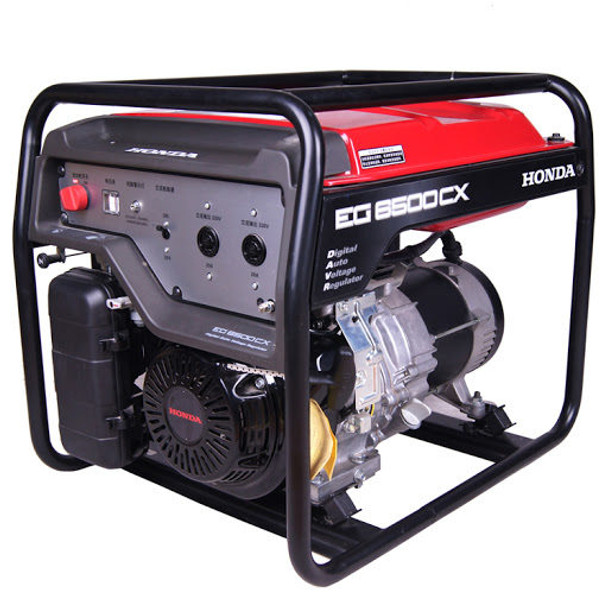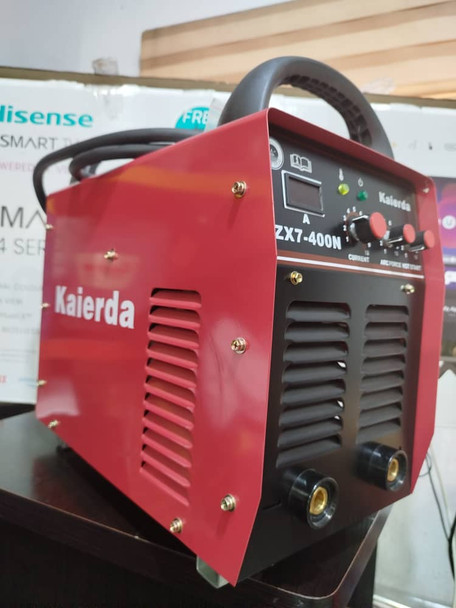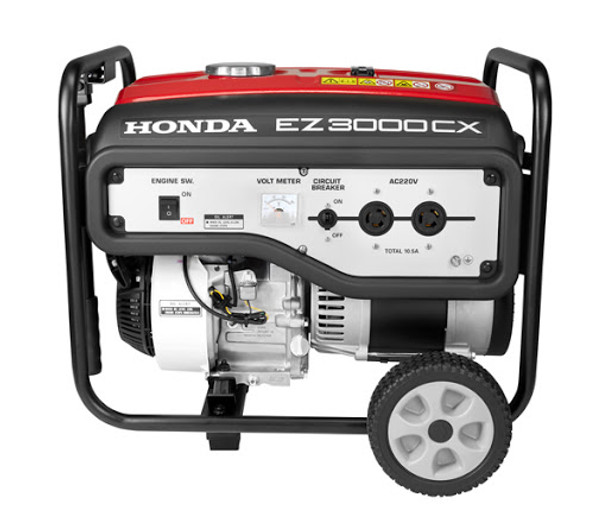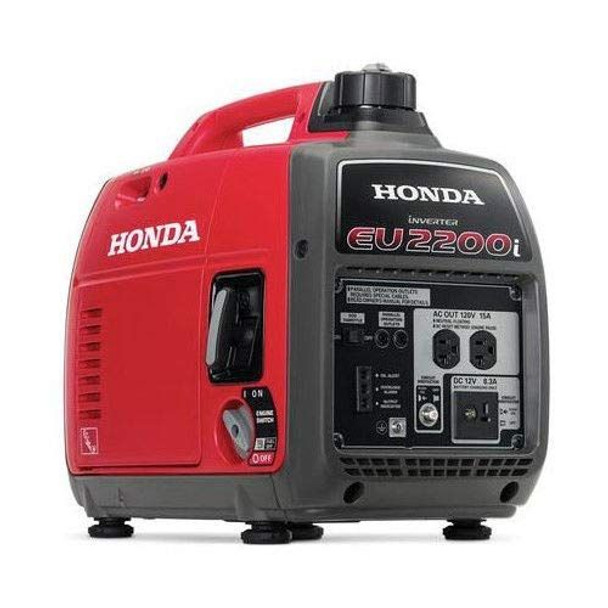Inverter Generators: Noise Reduction Techniques
Inverter generators have emerged as a versatile and efficient power source for a wide range of applications, from providing backup electricity during outages to enabling portable power for outdoor activities. These compact and highly reliable devices are known for their ability to deliver clean and stable power, making them essential in today's world. However, alongside their numerous advantages, inverter generators are often associated with a persistent drawback – noise. The noisy sound from a generator can spoil the peacefulness of a campsite, disturb neighbors during a power outage, or hinder the use of sensitive equipment in various settings.
This introduction sets the stage for our exploration of inverter generator noise reduction techniques, where we delve into the crucial and ever-relevant topic of minimizing the sound produced by these powerhouses. Noise reduction is not merely a matter of convenience but also a significant factor in environmental and user well-being. In this comprehensive examination, we will explore the sources of noise in inverter generators, the techniques employed to mitigate it, their benefits and drawbacks, and their role in shaping the future of generator technology. By the end of this journey, you will gain a profound understanding of how noise reduction plays a pivotal role in enhancing the utility and acceptance of inverter generators in our increasingly noise-conscious world.
 Electrical welding machine Inverter 155 Super Askaynak
Electrical welding machine Inverter 155 Super Askaynak
Understanding Noise Reduction in Inverter Generators
Inverter generators are engineered to be more efficient and quieter than conventional generators.Nevertheless, they are not entirely silent, and various noise sources contribute to the overall sound they produce. Understanding these sources is crucial for developing effective noise reduction techniques.
1. Engine Noise:
The primary source of noise in an inverter generator is the internal combustion engine. Inverter generators typically use small, high-revving engines that are designed for fuel efficiency and reduced emissions. However, the very process of burning fuel to generate power inherently creates noise. The rapid expansion and release of exhaust gases in the engine's combustion chamber produce a significant amount of mechanical noise. This noise can be further amplified by the cooling fan, which helps regulate the engine's temperature.
Noise reduction for engine noise often involves optimizing the design of the engine and muffler systems, improving combustion efficiency, and using advanced mufflers to minimize noise from the exhaust.
2. Mechanical Vibrations:
Another prominent noise source in inverter generators is mechanical vibrations. These vibrations are the result of moving parts within the generator, such as the engine components, alternator, and various mechanical linkages. As the engine runs, it generates vibrations that are transmitted through the generator's structure. These vibrations can create a humming or buzzing noise, adding to the overall sound output.
To mitigate mechanical vibrations, manufacturers employ isolation techniques, such as rubber mounts and dampeners, to minimize the transmission of vibrations from the engine to the generator's outer casing. This helps reduce the noise caused by mechanical movements within the generator.
3. Electrical Components:
Inverter generators are equipped with electronic components to convert the generated power into a stable and clean electrical output. While these components are essential for the generator's operation, they also contribute to the noise output. Components like inverters and electronic voltage regulators can produce a high-pitched whine or electronic buzzing noise.
Noise reduction strategies for electrical components include the use of high-quality, low-noise electronic components, proper grounding to minimize electromagnetic interference, and advanced shielding to isolate electronic noise from escaping.
 Honda Generator EM10000
Honda Generator EM10000
Decibel Levels and Their Significance:
Understanding the decibel levels associated with inverter generators is crucial because it allows us to quantify and compare the noise generated by different models. Decibels (dB) are a unit of measurement used to express the intensity of sound. When it comes to inverter generators, the significance of decibel levels can be broken down as follows:
1. Noise Perception:
The human ear is sensitive to a wide range of sound intensities. Generally, sounds below 70 dB are considered quiet, while those above 85 dB are considered loud and potentially harmful. Inverter generators often fall within this range, with their noise levels typically measured in decibels at various distances from the generator.
2 Comparing Generators:
Decibel ratings provide a standardized way to compare the noise levels of different inverter generators. A lower decibel rating indicates a quieter generator. When choosing an inverter generator for a specific application, understanding the decibel rating helps users select a model that aligns with their noise tolerance and the environment in which it will be used.
3. Environmental Impact:
Noise pollution can have negative consequences on the environment and human health. In residential areas and natural settings, excessive generator noise can disrupt the peace and tranquility of the surroundings. High decibel levels may lead to noise complaints, legal issues, or even restrictions on generator usage. Reducing the decibel level of inverter generators is not only a matter of convenience but also one of environmental responsibility.
Inverter Generators Noise Reduction Techniques
Noise reduction techniques in inverter generators are critical to improve the user experience, minimize noise pollution, and promote environmentally responsible power generation. This section explores various methods and technologies employed to reduce noise in inverter generators.
1. Acoustic Enclosures
a) Design and Materials:
Acoustic enclosures are designed to encapsulate the generator and reduce noise emissions. The design includes soundproof panels, doors, and ventilation systems. These enclosures are typically made from materials with excellent sound-absorbing properties, such as dense foam, composite boards, and rubberized coatings. They are engineered to be lightweight and durable to ensure long-term functionality.
The effectiveness of acoustic enclosures lies in their ability to absorb and block sound waves generated by the generator. They also incorporate sound baffles and acoustic insulation to prevent noise leakage.
b) Impact on Noise Reduction:
Acoustic enclosures can significantly reduce the noise generated by inverter generators. When properly designed and installed, they can achieve noise reductions of 10-20 decibels or more, making a noticeable difference in the overall sound output of the generator. These enclosures are particularly effective in residential and noise-sensitive environments, as they create a soundproof barrier around the generator, containing noise emissions within the enclosure.
2. Sound Dampening Materials
Types of Materials (e.g., acoustic foam, barriers): Sound dampening materials are used to absorb and dissipate sound waves produced by the generator. Common materials include:
a. Acoustic Foam:
Foam panels and tiles are known for their sound-absorbing properties. They reduce sound reflections and vibrations within the generator housing, thus diminishing noise output.
b. Acoustic Barriers:
These are dense materials designed to block sound transmission. They can be used as barriers between the generator and its surroundings, limiting the noise propagation.
Application Methods: Sound dampening materials are applied within the generator's housing, on its walls, and around components that produce noise. Acoustic foam is often used for lining the interior of the enclosure, while acoustic barriers may be installed strategically to block sound pathways.
The effectiveness of these materials depends on their density, thickness, and proper placement. They work by absorbing and reflecting sound waves, reducing reverberation, and preventing sound from escaping the generator's enclosure.
 Honda Generator EG6500CXS
Honda Generator EG6500CXS
3. Advanced Mufflers and Exhaust Systems
a) Innovations in Exhaust Design:
Inverter generators are equipped with exhaust systems that expel combustion gases. Advanced mufflers and exhaust systems incorporate innovative designs, such as expansion chambers and resonance tuning, to reduce the noise produced during the exhaust process. By manipulating the flow of gases, these systems can diminish the sound associated with engine exhaust.
b) Benefits in Noise Reduction:
Upgraded mufflers and exhaust systems have a direct impact on reducing engine noise. By optimizing the exhaust flow and minimizing backpressure, they can significantly lower the noise levels generated by the generator, contributing to a quieter operation.
4. Variable Engine Speed Technology
- How It Works: Variable engine speed technology, often referred to as "smart throttle" or "eco mode," allows the generator to adjust its engine speed based on the load demand. When the load is light, the engine operates at a lower speed, reducing fuel consumption and noise output. When the load increases, the engine revs up to meet the demand.
- Impact on Noise Levels: Variable engine speed technology is particularly effective in reducing noise during periods of low power demand. The generator operates more quietly when the engine speed is lowered, resulting in a quieter overall experience for users and reduced environmental noise impact.
5. Digital Signal Processing (DSP) and Noise Cancellation
- Overview of DSP Technology: Digital Signal Processing (DSP) is a technology that involves the use of advanced algorithms to process and manipulate audio signals. In the context of inverter generators, DSP can be employed to actively analyze and reduce noise.
- Effectiveness in Reducing Noise: DSP technology can identify and filter out specific frequencies associated with generator noise. This results in a quieter operation, as unwanted noise components are actively canceled out. DSP-based noise cancellation can be particularly effective for inverter generators with variable loads, as it can adapt in real-time to changing noise patterns.
6. Eco-Mode and Smart Load Management
- Features and Benefits: Eco-Mode and Smart Load Management are features designed to optimize the generator's performance and reduce noise output. Eco-Mode, as mentioned earlier, adjusts the engine speed based on the load, minimizing noise during lighter load conditions. Smart Load Management further enhances efficiency by dynamically distributing the load among multiple power outlets, preventing overloading and excessive noise.
- Impact on Noise Reduction: Both Eco-Mode and Smart Load Management contribute to noise reduction by ensuring the generator operates at the lowest necessary speed and load levels. By avoiding unnecessary high-speed operation and overloading, these features promote quieter and more fuel-efficient generator performance.
 Kaierda Inverter DC MMA Welding Machine ZX7-400N
Kaierda Inverter DC MMA Welding Machine ZX7-400N
Benefits and Drawbacks of Noise Reduction Techniques
Noise reduction techniques in inverter generators offer several advantages, but they also come with certain drawbacks that need to be considered when designing and using these generators.
A. Improved User Experience
One of the primary benefits of noise reduction techniques is the significantly improved user experience. Inverter generators that operate quietly are more user-friendly in a variety of applications, such as:
- Camping and Outdoor Activities: In recreational settings, quiet inverter generators make the outdoor experience more enjoyable, allowing users to appreciate the natural sounds of the environment without disturbance.
- Home Backup Power: During power outages, a quieter generator ensures that homeowners can maintain a comfortable and peaceful living environment, minimizing disruptions.
- Sensitive Equipment Operation: In situations where sensitive electronic equipment is used, such as in the medical field or audio-visual production, lower noise levels help maintain optimal working conditions and prevent equipment interference.
- Reduced Noise Pollution: Quieter generators reduce the overall noise pollution in residential and natural settings, promoting better community relations and environmental preservation.
B. Environmental Impact
Noise reduction techniques also have a positive environmental impact:
- Reduced Noise Pollution: Lower noise emissions from generators contribute to a quieter and more pleasant living environment for nearby residents and wildlife. Noise pollution can disturb ecosystems and have adverse effects on both human and animal well-being.
- Compliance with Noise Regulations: By using these techniques, generator operators can comply with noise regulations and ordinances, avoiding potential legal issues and fines associated with excessive noise emissions.
C. Cost Considerations
While noise reduction techniques offer several benefits, they can come with increased costs:
- Initial Investment: Generators equipped with advanced noise reduction technologies may be more expensive upfront. The materials and components used to reduce noise, such as acoustic enclosures and advanced mufflers, add to the overall cost of the generator.
- Maintenance Costs: Some noise reduction components, like acoustic foam and sound dampening materials, may require periodic maintenance or replacement to remain effective. This can result in ongoing maintenance costs.
- Fuel Efficiency Trade-offs: Variable engine speed technology and eco-mode features may lead to improved fuel efficiency but could slightly reduce the generator's power output. This can lead to a trade-off between lower noise levels and power generation capacity.
D. Trade-offs in Power Output
In some cases, noise reduction techniques can affect the power output of inverter generators:
- Lower Output at Low Load: Eco-mode and smart load management features reduce noise and fuel consumption during light load conditions. However, the generator's output may be lower in these scenarios. This is generally not a concern for devices with variable load demands but could impact certain applications.
- Impact on Peak Performance: In certain situations where maximum power output is required, noise reduction features might limit the generator's ability to reach its peak performance quickly. This is a trade-off between noise reduction and instant power availability.
 HONDA GENERATOR
HONDA GENERATOR
Maintenance and Longevity of Inverter Generators
A. Regular Maintenance for Noise Reduction Components
Noise reduction components, such as acoustic enclosures, mufflers, and sound dampening materials, require regular maintenance to ensure they continue to function effectively. Maintenance tasks may include:
- Inspection: Regular visual inspections to check for damage or wear in components like acoustic foam and acoustic barriers.
- Cleaning: Removing dust and debris from sound dampening materials and enclosures to prevent clogging and maintain optimal sound-absorbing capabilities.
- Replacement: Parts that have worn out or deteriorated should be replaced promptly to maintain noise reduction performance.
B. Impact of Noise Reduction on Generator Lifespan
The implementation of noise reduction techniques can have both positive and negative effects on the longevity of inverter generators:
- Positive Impact: Noise reduction components, such as acoustic enclosures and mufflers, can help protect the generator from environmental factors like moisture, dust, and debris. This can extend the generator's overall lifespan by reducing wear and tear on internal components.
- Negative Impact: Depending on the specific noise reduction methods used, there may be additional components that require maintenance, which can influence the generator's long-term durability. Additionally, eco-mode and smart load management features, while reducing noise, may alter the generator's operating patterns, potentially affecting the wear on certain engine components.
Related Article:
Where To Buy Generators In Nigeria
Which Generator is Best for Home use in Nigeria 2023
Tips To Maintain Your Inverter Battery
 Honda Inverter Generator Super Quiet EU220i
Honda Inverter Generator Super Quiet EU220i
Conclusion
Our exploration into noise reduction techniques for inverter generators has revealed a comprehensive array of strategies aimed at minimizing the disruptive effects of generator operation. We've covered a range of methods, from acoustic enclosures and sound dampening materials to advanced exhaust systems and innovative technologies like Digital Signal Processing (DSP). Each of these techniques plays a crucial role in diminishing noise emissions, thereby enhancing the usability and acceptance of inverter generators across diverse applications.
The significance of noise reduction techniques in inverter generators cannot be overstated. They address a critical concern that has long been associated with generator technology. By significantly reducing the noise levels, these techniques improve the user experience in various settings, from recreational outings to critical emergency situations. Moreover, they contribute to a quieter and more environmentally responsible approach to power generation, minimizing noise pollution and its associated impact on communities and ecosystems.
The evolution of noise reduction techniques represents a pivotal advancement in generator technology. By integrating innovative solutions, manufacturers are not only meeting the demands of noise-conscious consumers but also pushing the boundaries of generator performance. These techniques not only enhance the user experience by providing quieter operation but also lead to improvements in overall generator efficiency and longevity.
Inverter generators, armed with these noise reduction technologies, are poised to revolutionize how we access and utilize power in a wide range of environments. From camping enthusiasts seeking a peaceful outdoor experience to homeowners relying on backup power during outages, the benefits of these advancements are tangible and far-reaching.
As we look ahead, it is evident that continued research and development in noise reduction techniques will play a central role in shaping the future of generator technology. The ongoing pursuit of quieter, more efficient, and environmentally-friendly power solutions will undoubtedly lead to even greater innovations in the years to come. In doing so, we move closer to a world where reliable power generation seamlessly integrates with the natural and built environments, without compromising on the peace and serenity we hold dear.
Contact us for the availability of Inverter generators in your locality.


